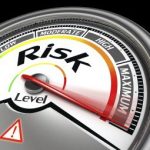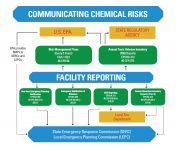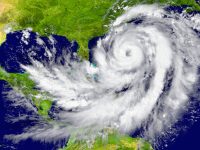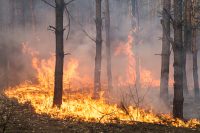No one wants it to happen, but an emergency, natural or manmade, can strike at anytime, 24/7. What’s more, it need not be a major, nationally-televised incident, such as a hurricane, earthquake, or act of political terror. An event as common as a local building fire can present just as large a challenge to you. These resources will help you create a plan for handling such crises, whatever their scope, and to carry it out in a way that best protects your employees and your company.
The Occupational Safety and Health Administration’s (OSHA) personal protective equipment (PPE) standards for construction require that protective clothing be maintained “in a sanitary and reliable condition.”
In April 2014, the Occupational Safety and Health Administration (OSHA) revised its Power Generation, Transmission, and Distribution rule (29 CFR 1910.269). The revised rule includes new requirements for estimating the heat energy that workers might be exposed to in the event of an electric arc, and how to select appropriate personal protective equipment based on […]
Did you know that the EPA estimates the average cost to clean up a spill or release from an underground storage tank (UST) system is $125,000? These high costs to clean up a spill or a release can cause significant anxiety and stress on any UST owner or operator.
Violence in the workplace isn’t pleasant to think about, but recent events highlight how important it is for employers to plan for it. We have advice for building an effective “active threat” plan from security expert Jay Hart. Hart, director of Force Training Institute, leads a team of first responders, antiterrorism, cybersecurity, defensive tactics, and […]
The federal Emergency Planning and Community Right-to-Know Act (EPCRA) was designed to enhance and, in many cases, build state and local governments’ emergency response and preparedness capabilities. EPCRA requires industry to provide information about certain chemicals and the quantities present at their facilities, so that state and local officials can plan for and respond to […]
Some SPCC-regulated facilities require an additional contingency plan. Federal guidelines have been established for minimum criteria for the development and implementation of state, local, and regional contingency plans. The plans are developed by state and local governments in consultation with private interests in order to ensure timely, efficient, coordinated, and effective action to minimize damage […]
To cap off our National Preparedness Month coverage this week, check out our workplace emergency planning infographic below. We’ll see you on Monday with the launch of the new EHS Daily Advisor! Is your workplace emergency plan in good shape? Here are 7 steps to make sure you’re prepared to keep your workers safe when […]
September is National Preparedness Month. This month, the Federal Emergency Management Agency (FEMA) is encouraging businesses and individuals to make a plan for staying safe during different types of emergencies. Today we’ll look at FEMA’s recommendations for facing a power outage. When the power’s out, your business and your workers may face hazards that they […]
September is National Preparedness Month. This month, the Federal Emergency Management Agency (FEMA) is encouraging businesses and individuals to make a plan for staying safe during different types of emergencies. Today we’ll look at how you can prepare your business to survive a hurricane. The north Atlantic hurricane season runs from June 1 to November […]
September is National Preparedness Month. This month, the Federal Emergency Management Agency (FEMA) is encouraging businesses and individuals to make a plan for staying safe during different types of emergencies. Today we’ll look at how to prepare your business to survive a wildfire. If your workplace is located within a "wildland urban interface"—a spot that […]










